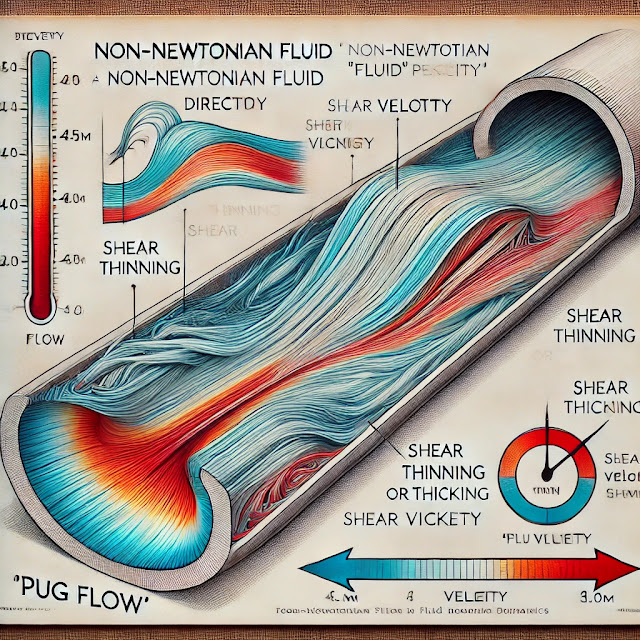Pug flow, also known as "plug flow," is a term used primarily in the context of fluid dynamics and chemical engineering. It describes a type of flow in which the fluid moves through a reactor or pipe in a manner similar to a plug moving through a tube. In this flow pattern, the fluid elements move with the same velocity as if they were a solid plug, meaning there is no mixing or dispersion along the length of the reactor.
Characteristics of Plug Flow:
- Uniform Velocity Profile: In plug flow, all the fluid elements move at the same velocity, and there is minimal variation in velocity across the cross-section of the flow.
- No Radial Mixing: There is very little to no mixing of fluid elements in the radial direction; thus, each "plug" of fluid retains its identity as it moves through the reactor.
- Ideal Reactor Behavior: Plug flow is often considered an idealized flow pattern for reactors because it maximizes the efficiency of reactions by ensuring that each fluid element experiences the same reaction time.
How to Reduce Plug Flow (or Achieve More Uniform Flow):
- Add Baffles: Installing baffles in a reactor can disrupt the flow pattern and induce mixing, thereby reducing the extent of plug flow. Baffles can create turbulence and improve mixing.
- Use Stirred Reactors: In stirred tank reactors, mechanical agitation helps to ensure more uniform mixing and prevents the formation of plug flow patterns.
- Modify Reactor Design: Adjusting the design of the reactor, such as by changing its shape or introducing mixing elements, can reduce the extent of plug flow.
- Optimize Flow Conditions: Adjusting the flow rate and operational conditions can also help to achieve more desirable flow patterns and reduce the impact of plug flow.
In practice, achieving a perfect plug flow is challenging, so many real reactors exhibit a combination of plug flow and other flow patterns. Engineers and chemists often aim to minimize deviations from ideal plug flow to optimize reaction efficiency.











0 Comments
Thanks for your feedback, ll get back to you soon